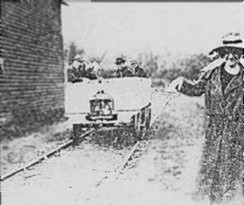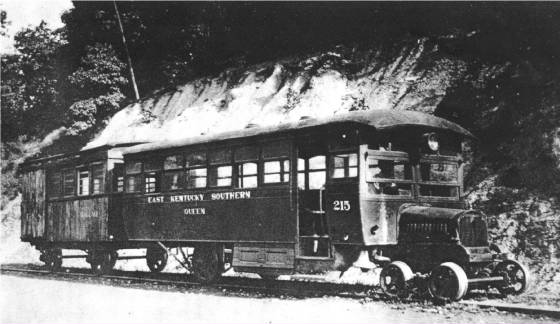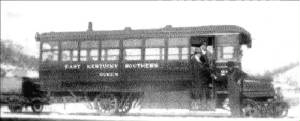
|
| Open car on E.K.
c.1928 |
In 1928 the United States was
on a collision course with the Great Depression and it was in
that same year that the citizens of Grayson, Vincent,
Hitchins, Reedville, Butler, Willard, Bellstrace, and
Webbville purchased the Grayson-Webbville segment from the
owners of the Eastern Kentucky Railway. The name of their new
company was the "Eastern Kentucky Southern Railway Company".
The new company made a
determined effort to win the approval of the public and to
make a profit. A new automobile powered vehicle, No. 215,
popularly called "Queen" was introduced to the segment. Queen
looked very much like a school bus on tracks and had much less
engine than that of the Blue Goose.

|
| No. 215 "Queen",
c.1930 |

|
| Queen,
c.1932 |
The Eastern Kentucky Southern
Railway made some money but not enough to maintain the tracks
for three years. The road became very dangerous for rail
travel and the decision was made to discontinue the line. An
application to abandon the remaining 13.41 miles of track was
filed with the Interstate Commerce Commission on December 12,
1932. Exactly one week later permission was granted.
Service on the line terminated
near the end of January 1933, and work of dismantling the line
started shortly thereafter. The track, rolling stock, and
locomotives were sold for no less than scrap price. The day of
the Eastern Kentucky Railway had quietly ended.

|
| Queen,
c.1929 |
|

